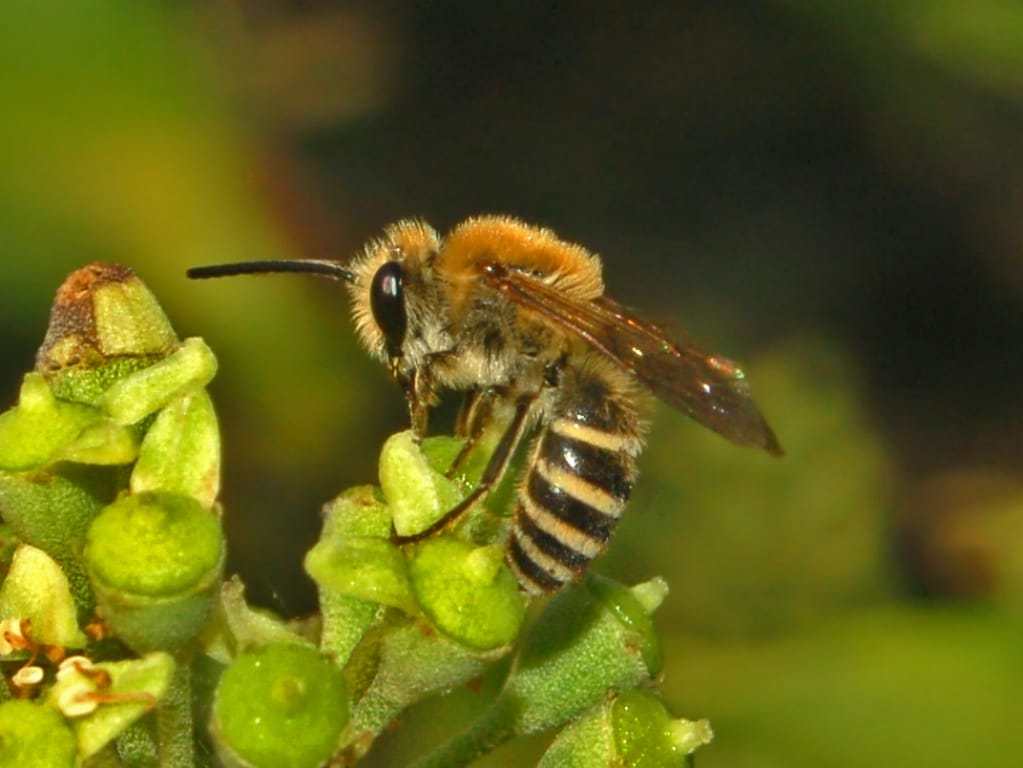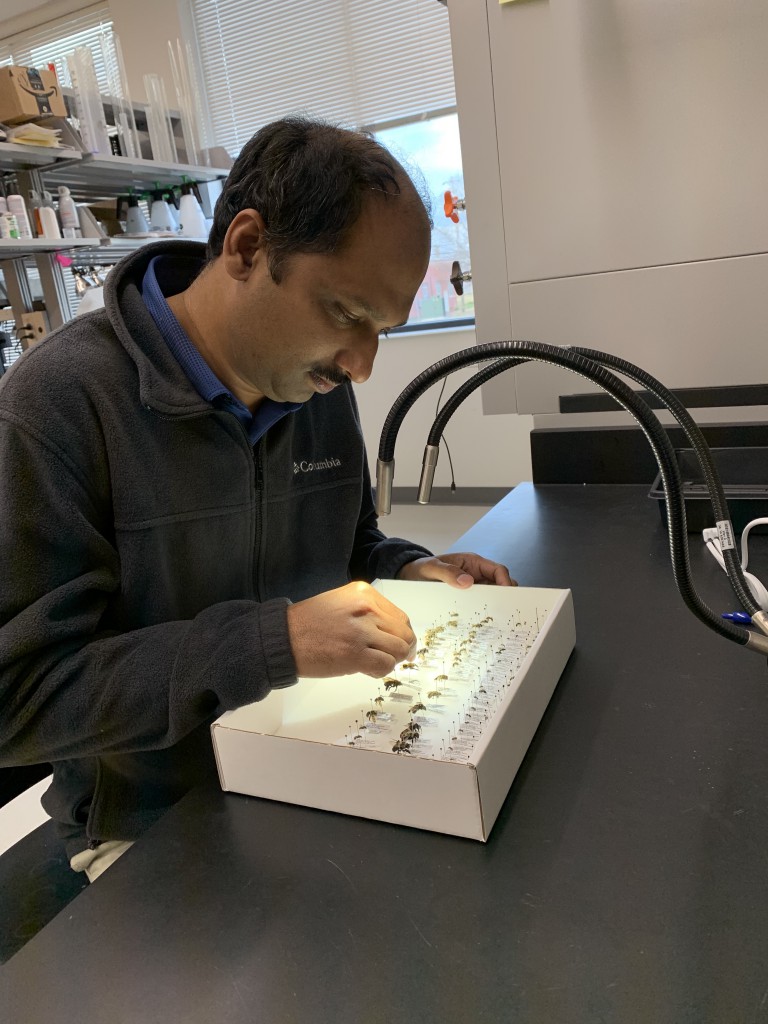Written By: Emily Cabrera, IPM Communications Coordinator
Expert Source: Shimat Joseph, Assistant Professor Entomology

Photo: Center for Urban Agriculture
Home gardens and urban landscapes have the potential to provide a vast array of habitat for valuable beneficial insects and pollinators, but that doesn’t mean you have to allow pests, weeds and diseases to go unchecked.
“Find that balance. You should certainly manage those pests that return year after year, but also find ways to provide refuge for beneficial insects to thrive and do their work” said Dr. Shimat Joseph, University of Georgia assistant professor of entomology on the Griffin campus.
Joseph recommends homeowners and landscape professionals do their best to mitigate negative impacts on beneficials that can occur when trying to manage pests in the landscape. Proper identification of pests and sensible use of insecticides is the simplest approach.
“Insecticides kill insects, that’s what they are designed to do,” said Joseph, “they are not intrinsically bad, they are a tool that should be used wisely, and it’s up to us to decide if an insecticide is necessary to apply for control and then make sure we understand how best to apply them.”
Joseph is currently one year into collecting data in five counties in Georgia looking at flowering stages of turfgrass and common turfgrass weeds throughout the growing season, examining the various species of bees that are present in those systems. This research is important in order to make better recommendations for insect and weed control in turfgrass so as to have the least negative impact possible on pollinators. In their first year of data collection, Joseph and his team found 13 species of ground-nesting and solitary bees throughout the season, with more abundance of species collected in August and September.

“We cannot yet make solid recommendations because even though we found more abundance later in the summer it is not to say that the species we found earlier in the season aren’t as important, so we will continue collecting data this next season to hopefully provide suggestions of how to maintain healthy lawn and turf while also minimizing impact to these important pollinators” explained Joseph.
“As far as insecticides, Acelepryn (Chlorantraniliprole) is considered a “bee-friendly” insecticide because it has target site insensitivity on bees, and is used to control beetles and armyworms. Acelepryn is more preventative than curative but is effective at 0.1 lb AI/acre. This chemistry has very low mammalian toxicity so it’s less hazardous but can be expensive” explained Joseph.
“And as far as weeds are concerned in these systems, the best thing to do is mow grass before insecticide applications.” In general, Joseph recommends homeowners reduce the use of neonicotinoids, and never apply to flowering plants. He suggested focusing on diversifying the landscape with bee-friendly flowering plants, substitute chemistries that are less toxic to bees, and plant pest-resistant varieties to help minimize the need for chemical insecticides.
For more information on managing turfgrass insect pests and pollinators visit UGA Extension Bulletin 1127.